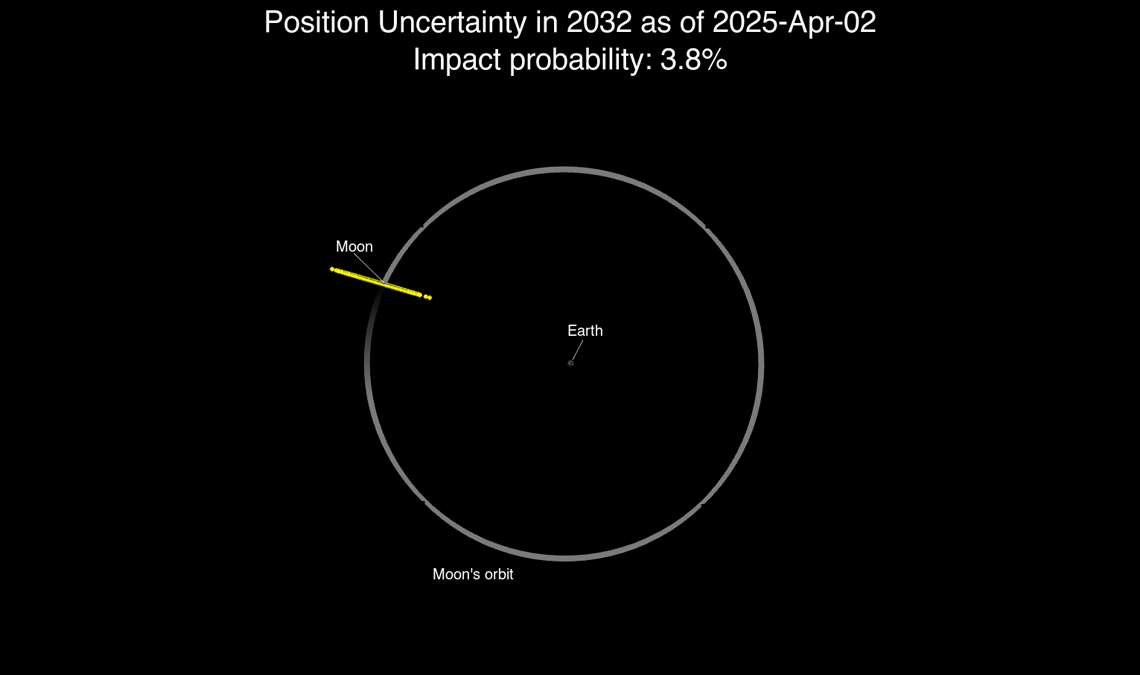The James Webb Space Telescope (JWST) has taken its final look at the potentially hazardous asteroid 2024 YR4, at least until the potentially hazardous space rock darkens Earth’s cosmic doorstep again in 2028. The latest observations reveal that, while Earth faces no risk of impact from the asteroid for the foreseeable future, the moon might not be so lucky.
The new observations, taken with JWST’s Near-Infrared Camera in May, allowed scientists to calculate the space rock’s trajectory with the greatest precision yet, according to a NASA statement. The new predictions suggest there’s a 4.3% chance that asteroid 2024 YR4 will collide with the moon on Dec. 22, 2032 — up from the 3.8% odds of a lunar impact reported after JWST initially imaged the space rock in March.
“As data comes in, it is normal for the impact probability to evolve,” NASA representatives wrote in the statement. “NASA expects to make further observations when the asteroid’s orbit around the Sun brings it back into the vicinity of Earth in 2028. ”
Asteroid 2024 YR4 is a building-size space rock measuring between 174 and 220 feet (53 to 67 meters) in diameter — about as wide as the Leaning Tower of Pisa is tall. If an asteroid this size were to impact Earth, it could wipe out a city with the equivalent force of 500 Hiroshima bombs, Live Science previously reported. (Again, there is no risk of an Earth impact anytime in the foreseeable future.)
The asteroid was first discovered in December 2024, when astronomers realized that its orbit around the sun routinely crosses Earth’s. Early projections of its trajectory revealed a potential collision course with Earth in 2032, with the odds of an impact peaking at 3.1% in February.
Further observations with JWST and ground-based telescopes soon helped scientists hone the rock’s trajectory, bringing the odds of an Earth impact down to zero.
Related: NASA’s most wanted: The 5 most dangerous asteroids to Earth
At the same time, the chances of the meaty space rock striking the moon have steadily climbed. Given the rock’s size, a collision with the moon would create a new crater…
Click Here to Read the Full Original Article at Latest from Live Science…

